







Group Exhibition
Kunstgewerbemuseum Dresden
Schloss & Park Pillnitz
27.04.–03.11.2024
⭢ More on project
⭢ Visitors’ Info
🌱 The multi-year research and exhibition project PLANT FEVER addresses current debates on the topic of sustainability, the relationship between humans and plants, and our use of resources. The exhibition argues for a profound rethinking of our relationship with the vegetal world and opens up a space to link art, science and ecology. Pillnitz Palace & Park offers a unique complement to this approach due to the horticultural tradition that has historically grown in Pillnitz.
Ranging from products and fashion items to material research, open-source devices and emerging technologies, my work, “Chita’ Anyaman. Braiding Tales” will be featured alongside 50+ projects, representing the work of creatives from more than 20 countries.
Europe, 2022–ongoing
A long-term research project (field trips, theoretical study, exhibitions, and knowledge transmission) about natural materials and the environmental, social, cultural challenges they face in the frame of the current climate crisis.
In a world that prioritises industrial materials and production, the use of natural materials has become untenable. They are deemed extractive and undesirably perishable in its quality. The significant use of natural materials has oscillated over time between an extractive movement and questionable longevity. By investigating the traditional craft making, i critically examine today's production practices. Yet another factor with slowness in making necessitates a mindful practice for craftsmanship and care. This practice reminds us of the lost material culture that existed before the industrial era.
From challenging natural materials implied extractive to exploring its resiliency, sustainable potential and ways to efficiently utilize scarce resources, THE PERISHABLE, SLOWNESS AND KINSHIP seeks to uncover alternative ways to anticipate future ways to produce and its challenges, in which natural systems shape our disciplines. Working with experts from various disciplines including craftspeople, scientists, policy makers, designers, engineers and ecologists, they are all united in their desire to become agents of social, ecological and political change through collaborative and interdisciplinary practices.
#futureofcraft #materialfutures #designresearch




2024–ongoing
A design and material research collaborative project with Pauline Agustoni.

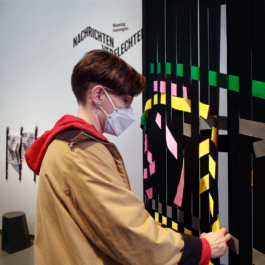











Happy to share that my work will be part of Vienna Design Week with an installation presenting a selection of works produced during this’s School of Phyto-centred Design organised by the Kunstgewerbemuseum Dresden. ROOM FOR CHANGE is an invitation to change perspective, question harmful agricultural practices, and look at plants as allies for militant and poetic design scenarios. Showcasing material experiments, fashion items, products, performances as well as videos and photos, the installation highlights the design and narrative potential of plants and reveals stories of interdependence, empowerment, resilience, but also exploitation, overconsumption, and colonization.
•
Other featured works by: Archeomaterico, Deborah Tina, Sahrajajarmikhayat, Anojish Kariano, Jaqueline Lobodda, Chi.makes.jewelry, Sujia Wang, morgennacht (art direction by Emma Bruschi) Kareem Goshan, Katoy Design, Benedikt Trojer (art direction by Fernando Laposse) / Natalia Milla / Katharina Ursula Mludek, Katrin Schwarz, Julia Sulikowska. Special thanks to Thomas Geisler for inviting us, and to Jasmin Schauer for the smooth coordination.
•
Image credit:
[1] Mah Meri girls get ready for dancing for tourists”, Carey Island, Bemboun Village, Carey Island, Malaysia, 1990, Jean Gaumy.*
[2–3] Leonie Hochstrasser
*This project is a non-commercial project. The pictures used are for educational and research purposes only.



The Almanac exhibition is the inaugural research project of Fondation d’entreprise Martell, which, since its inception five years ago, is now evolving into a research and experimentation platform for art and design, as well as a space for raising awareness and learning – with a focus on living things.
This experimental initiative, which takes the form of an exhibition, residencies, encounters, and a living archive laboratory, emerged from a reflection on how a foundation located in a context that is rural yet industrial, prosperous yet remote, can establish itself as an agent for local dynamism and activate new potential for collective transformation. It soon became clear that the first step, before taking any action, would require the compilation of an inventory of the region’s resources and issues.
A team of designers was assigned with an investigative mission involving a wide range of local contacts (institutions, businesses, professional networks, and residents of Charente and Charente-Maritime), to identify local resources – natural and industrial, tangible and intangible.
The team led by Olivier Peyricot with Lola Carrel, Valentin Patis, and Mathilde Pellé, established an investigative methodology before embarking on the collection and analysis work.
The subjective view resulting from their observations is presented on the second floor of the Foundation. It offers an immersion into the collected samples, enabling visitors to rediscover significant materials and neglected deposits, living techniques, and forgotten know-how.
This multi-faceted and contributory project explores the processes of production and interdependence in order to better position itself as a tool and catalyst for transition, enabling the development of unique creative practices that bring about change. The aim is to create new imaginaries and chart new ways for building a resilient and equitable future.
New Order of Fashion (NOoF) invites (aspiring) fashion design professionals to join us for an invigorating week-long programme exploring the knowledge and skills we need for a better fashion future!
The ‘Design for Change’ retreat addresses the contemporary issues fashion faces: on climate, environment, production, consumption, and wellbeing for people. Through a combination of theory and hands-on exercises, we’ll examine the various paths that can be taken to a cleaner, smarter and more caring fashion future.
Together with a stellar line up of international speakers, experts and workshop hosts, we will collectively investigate the overarching goal of sustainable and circular fashion design. The program includes topics and methodologies such as systemic thinking, local regeneration, material understanding & value, crafts, remake and repair skills, and building resilient communities.
‘Rooted Craft’ is a research project that explores rural crafts with a new approach to weaving techniques that were once a thriving economic activity for agricultural and transportation of goods, as well as for domestic use. With the scarcity of natural resources and environmental awareness, there is a resurgence of artisanal production, recovering ancestral technologies.
The resulting products answer the demand for more ecological consumption choices. With that in mind, this project looks to form new hybrid understandings of weaving, through know-how exchange and transfer and weaving archetypes research to open new possibilities for new applications. In result of these rich archives, they will be integrated in the ‘Situated Practices’ exhibition.
⭢ More on project

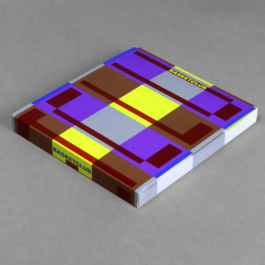
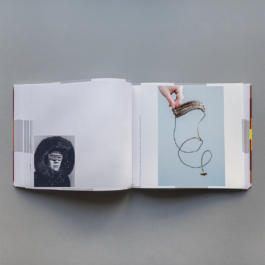


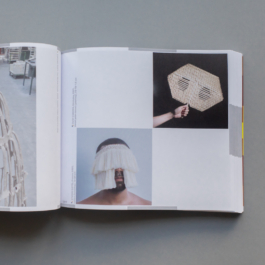






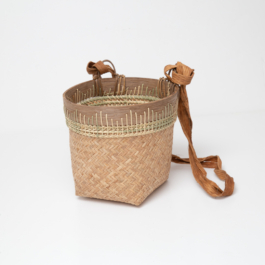

Feature works on publication, 2023
⭢ Link
Together with designers and crafts makers from diverse backgrounds (product, textile and graphic design, design anthropology, crafts making, etc.), I am thrilled to be part of this initiative as this way of working has shaped me the past years of my practice as a designer and my work methodology via acknowledging the history of low-tech crafts and the material design.
The instagram-based group Basketclub was founded during the pandemic by Dutch designer Adrianus Kundert and Canadian designer Jamie Wolfond with the idea of empowering experimental making during the difficult times. Each member of Basketclub weaves a basket based on an emoji.
To celebrate three years of Basketclub, and the 300+ baskets made for the project, the book was launched during Salone del Mobile last year. The baskets shown represent a range of different approaches, including technical, aesthetic, conceptual, playful, political, and historical. Each designer brings their unique fascination and cultural context to the theme.
•
The book, designed by Koos Breen, and edited by Adrianus Kundert has 312 full color pages with images of all the basketry projects and includes essays by Ed van Hinte, Adrian Madlener and Lois Walpole.



Group Exhibition
Erin Stump Projects, Toronto
Jan 21–Feb 26, 2023
⭢ Link
In the studio, designers frequently use ad hoc processes to represent industrial ones, but often these improvised methods are more interesting than the ones they represent. The purpose of this show is for participants to engage in experimental crafts which may fall outside the traditional canon of their discipline.
This event takes place in conjunction to the Design Week Toronto.
#reinterpreting #traditionalobjects
Organisation by Jamie Wolfond and Rebecca Collins. 📸 by Sean Davidson and graphic design by Soleil Singh.





Group Exhibition
World Design Capital Valencia
Sept 19–25, 2022
⭢ Link
Rattan is a humble material, but extremely rich in shades. Obtained from the processing of certain species of climbing palms mostly found in Asia and Africa, rattan is fine, durable, sturdy while visually lightweight. Similar materials, such as wicker, esparto and cane, have been used since ancient times, especially in the rural environments, to produce both decorative and daily-life functional objects, such as baskets, espadrilles, mats, and seats. It has long been widely used in the field of design, too.
The exhibition features the results of the 1-week Summer workshop which took place at Domaine de Boisbuchet. During the workshop, we focused on rattan’s properties and explore all the different ways and possibilities to work with it, pushing it to its limits. Our hands will be very busy in weaving and bending, twisting and twining (with the help of a steamer at our side to shape our ideas).
Participants: Anton Rahlwes, Carla Alcalà Badias, Evey Kwong, Gonçalo Lopes Cardos, Isabel Alonso, Lucia Sanchis and Nic Holden.
Material sponsorship by Expormim. Photos by Nacho García.






Research and Writing, 2022
Essay “In the beginning was the loop. The anthropology of basketry in Borneo.”
by Evey Kwong
The volume looks at human history through its details, and invites us to see design and architecture in new ways. Comprehensive and interdisciplinary, U-JOINTS is a collective project that brings together the voices and viewpoints of more than 120 authors. Together they “tell” design and architecture in the form of stories, essays, interviews, statements, visits to factories, reportage, facts and figures and, not least, a vast taxonomy of joints. Photo portfolios examine how joints are produced, illustrate their diverse uses, or simply show the inherent yet often overlooked beauty of connections in the man-made world.
Editors: Andrea Caputo, Anniina Koivu
Editorial team: Margherita Banchi, Marta Pezzoli
Senior researcher: Eleonora Castellarin
Design: Graphic Thought Facility
Printed and bound by: Musumeci Spa
Publisher: SYNC-SYNC Editions



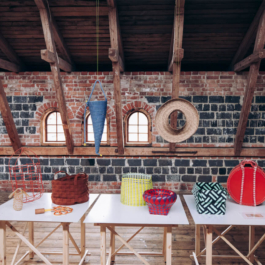



U-Joints – Knots & Knits is a glimpse into the manifold possibilities of intrinsic connections, unravelling the history of textiles, fabrics and ropework. Whether used in rigging, for lifting heavy objects, wrapping a lunch box or closing a gift, securing a funambulist’s highwire, keeping a climber from falling off a wall or creating adventurous playgrounds for children, knots are considered the oldest and most basic technique of joinery. Bridges, bamboo scaffoldings, fishing nets: all kinds of structures can trace their origins to the simple gesture of pulling a string through a loop. Knitting, in turn, creates anything from clothing to car interiors to entire architectural structures. When strings are intricately crossed, woven patterns are born.
In the form of upholstery weaves, they lend comfort to our sofas, can buffer noise or explode into life-saving airbags. Electric cables, airplane wings and morphing membranes for vascular prostheses can be woven. Clothing and home textiles are unimaginable without weaving. Decorative tapestries cover walls to keep out the cold, while knitted, knotted, hooked and woven carpets and rugs cover floors and warm our feet. Woven wicker, rattan or birch bark creates baskets, chairs or shoes. Seamstresses master stitching in sewing work. Surgeons practice stitching for closing wounds. Women embroidered each night after dinner, whether for leisure or work. Needlework was used to embellish dresses or to stitch mischievous political messages into a piece of cloth.But the use of knits and knots is by no means old-fashioned: not long ago, a computer’s core memory was stitched, as are today, books, sneakers and NASA’s equipment for space.
Featured joint projects by Anni Albers, Luisa Cevese, Clifford Ashley, Carole Baijngs, Estelle Bourdet, Ronan and Erwan Bouroullec, You-Chia Chen, Rebecca Collins, Dach and Zephir, Pete Decker, Pauline Deltour, Earnest Studio, Pierre Fouché, Shigeki Fuijshiro, Kai Hesari, Joseph-Marie Jacquard, Kate Jenkins, Ýr Jóhannsdóttir, Hella Jongerius, Chris Kabel, Karhu, Markku Kosonen, Wataru Kumano, Adrianus Kundert, Evey Kwong, Maria Lai, Ada Lovelace, Robin Pleun Maas, Outi Martikainen, Mary Queen of Scots, Masayoshi Matsumoto, Christien Meindertsma, Aino Michelsen, Thomas Missé, Takao Momiyama, Bruno Munari, Matilda Palmu, Gaetano Pesce, Philippe Petit, Tau Pibernat and Vera Castelijns, Irene Posch, Simone Post, Bertjan Pot, Rein Reitsma, Samy Rio, Garth Roberts, Marialaura Rossiello/Studio Irvine, Adrien Rovero, Kustaa Saksi, Katrina Sánchez Standfield, Brynjar Sigurðarson, Mikko Snellman, Ief Spincemaille, Peter Steinhauer, Studio Sanne Visser, Kiki van Eijk, Joep Verhoeven, Milou Voorwinden, Ulla-Stina Wikander, Marcel Wanders, Jamie Wolfond, Zaven.
In collaboration with Luovi Productions Kari Korkman, Helena Fernström, Anni Korkman, Iris Korkman, Rania Taina, Neea Rautio, Lauri Johansson.

The whisk brooms from my crafts research has found its new home in the Berlin State Museum collection. In conjunction to the upcoming exhibition All Hands On: Basketry, the brooms will be showcased along with the impressions of my past learning experiences with Carlos Fontales (ES), Serfenta (PL), Margrit Linder (CH) and in Borneo.
From left to right: Brooms techniques found from Habkern, Uri and Murcia. Made by Evey Kwong. © Staatliche Museen zu Berlin, Museum Europäischer Kulturen, Christian Krug


Group Exhibition
An initiative of Crafts Council Nederland in collaboration with Adrianus Kundert, designer and co-founder of Basketclub.
HOW&WOW BASK IT! – or ‘treasure it’ – will transport you into the world of basketry and reveal the numerous aspects of three dimensional weaving: the specific characteristics, creative techniques, new implementations, cultural exchange and nature conservation. Basket weaving is a 3D-construction technique allowing the maker to create a three dimensional shape using their own hands and just a few tools. The craft, and also its importance, have undergone changes through time. Few people realise that all woven baskets, furniture and accessories are still made by hand, including those sold by the well-known retail chains. Lack of appreciation for this time consuming technique has resulted in it now rarely being practiced in the western world. It is particularly important to focus on the unique characteristics of hand made products in the current era of globalisation, digitalisation and robotics. Craftsmanship is satisfying work, makers are in control of what they produce and are able to express their individuality. It is no surprise that the online community Basketclub arose during the pandemic.
Participants: Adrianus Kundert, Amandine David, Anaïs Godefroy, Bertjan Pot, Carole Baijings, Chris Kabel, Christopher Specce, Clara von Zweigbergk, dach&zephir, Earnest Studio, Emma Cogné, Esmé Hofman, Esther van Schuylenbergh, Evey Kwong, Fango, Garth Roberts, GREATMINOR, Hella Jongerius, Hsiao Fong, Ief Spincemaille, Ineke van der Sommen, Jamie Wolfond, Joris van Tubergen, Léa Mazy, Lenny Stöpp, Lois Walpole, LouCruard, Mae Engelgeer & Ames, Mandenmakerij de Mythe, Michael Schoner, Nathalie Miebach, Nationaal Vlechtmuseum Noordwolde, Rebecca Collins, Rein Reitsma, Renaud Defrancesco & Anne Bertoncini, Rik van Veen, Rob van Hernen, Samy Rio, SCMP DESIGN OFFICE, Sebastian Herkner, Shigeki Fujishiro, Simone Post, Studio Satël, Tamara Orjola, Thomas van der Sman and Yuki Hidano.
Team Crafts Council Nederland: Marion Poortvliet, Willemien Ippel & Guusje Heesakkers
Curator: Adrianus Kundert
Graphic design: Daniël Maarlevel
Photo credit: Fan Liao
HOW&WOW BASK IT! is financially made possible by Creative Industries Fund NL, Prins Bernhard Cultuurfonds and Dedon.


The origin of this technique derives from the Bornean ‘Bekang Kerawang’, a burden basket typically used for carrying agricultural harvest and game. As a presumption, this technique is introduced based on the needs to construct a rigid (non-organic in form) quadrilateral plane, suited to use them as frames to construct a cuboid container.



Group Exhibition
Kunstgewerbemuseum Dresden
Schloss & Park Pillnitz
27.04.–03.11.2024
⭢ More on project
⭢ Visitors’ Info
🌱 The multi-year research and exhibition project PLANT FEVER addresses current debates on the topic of sustainability, the relationship between humans and plants, and our use of resources. The exhibition argues for a profound rethinking of our relationship with the vegetal world and opens up a space to link art, science and ecology. Pillnitz Palace & Park offers a unique complement to this approach due to the horticultural tradition that has historically grown in Pillnitz.
Ranging from products and fashion items to material research, open-source devices and emerging technologies, my work, “Chita’ Anyaman. Braiding Tales” will be featured alongside 50+ projects, representing the work of creatives from more than 20 countries.


2024–ongoing
A design and material research collaborative project with Pauline Agustoni.

Europe, 2022–ongoing
A long-term research project (field trips, theoretical study, exhibitions, and knowledge transmission) about natural materials and the environmental, social, cultural challenges they face in the frame of the current climate crisis.
In a world that prioritises industrial materials and production, the use of natural materials has become untenable. They are deemed extractive and undesirably perishable in its quality. The significant use of natural materials has oscillated over time between an extractive movement and questionable longevity. By investigating the traditional craft making, i critically examine today's production practices. Yet another factor with slowness in making necessitates a mindful practice for craftsmanship and care. This practice reminds us of the lost material culture that existed before the industrial era.
From challenging natural materials implied extractive to exploring its resiliency, sustainable potential and ways to efficiently utilize scarce resources, THE PERISHABLE, SLOWNESS AND KINSHIP seeks to uncover alternative ways to anticipate future ways to produce and its challenges, in which natural systems shape our disciplines. Working with experts from various disciplines including craftspeople, scientists, policy makers, designers, engineers and ecologists, they are all united in their desire to become agents of social, ecological and political change through collaborative and interdisciplinary practices.
#futureofcraft #materialfutures #designresearch



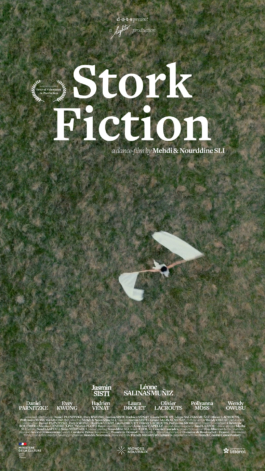





Happy to share that my work will be part of Vienna Design Week with an installation presenting a selection of works produced during this’s School of Phyto-centred Design organised by the Kunstgewerbemuseum Dresden. ROOM FOR CHANGE is an invitation to change perspective, question harmful agricultural practices, and look at plants as allies for militant and poetic design scenarios. Showcasing material experiments, fashion items, products, performances as well as videos and photos, the installation highlights the design and narrative potential of plants and reveals stories of interdependence, empowerment, resilience, but also exploitation, overconsumption, and colonization.
•
Other featured works by: Archeomaterico, Deborah Tina, Sahrajajarmikhayat, Anojish Kariano, Jaqueline Lobodda, Chi.makes.jewelry, Sujia Wang, morgennacht (art direction by Emma Bruschi) Kareem Goshan, Katoy Design, Benedikt Trojer (art direction by Fernando Laposse) / Natalia Milla / Katharina Ursula Mludek, Katrin Schwarz, Julia Sulikowska. Special thanks to Thomas Geisler for inviting us, and to Jasmin Schauer for the smooth coordination.
•
Image credit:
[1] Mah Meri girls get ready for dancing for tourists”, Carey Island, Bemboun Village, Carey Island, Malaysia, 1990, Jean Gaumy.*
[2–3] Leonie Hochstrasser
*This project is a non-commercial project. The pictures used are for educational and research purposes only.









The Almanac exhibition is the inaugural research project of Fondation d’entreprise Martell, which, since its inception five years ago, is now evolving into a research and experimentation platform for art and design, as well as a space for raising awareness and learning – with a focus on living things.
This experimental initiative, which takes the form of an exhibition, residencies, encounters, and a living archive laboratory, emerged from a reflection on how a foundation located in a context that is rural yet industrial, prosperous yet remote, can establish itself as an agent for local dynamism and activate new potential for collective transformation. It soon became clear that the first step, before taking any action, would require the compilation of an inventory of the region’s resources and issues.
A team of designers was assigned with an investigative mission involving a wide range of local contacts (institutions, businesses, professional networks, and residents of Charente and Charente-Maritime), to identify local resources – natural and industrial, tangible and intangible.
The team led by Olivier Peyricot with Lola Carrel, Valentin Patis, and Mathilde Pellé, established an investigative methodology before embarking on the collection and analysis work.
The subjective view resulting from their observations is presented on the second floor of the Foundation. It offers an immersion into the collected samples, enabling visitors to rediscover significant materials and neglected deposits, living techniques, and forgotten know-how.
This multi-faceted and contributory project explores the processes of production and interdependence in order to better position itself as a tool and catalyst for transition, enabling the development of unique creative practices that bring about change. The aim is to create new imaginaries and chart new ways for building a resilient and equitable future.

Workshop/Teach + Talk
Eindhoven, NL
July 13–14, 2023
New Order of Fashion (NOoF) invites (aspiring) fashion design professionals to join us for an invigorating week-long programme exploring the knowledge and skills we need for a better fashion future!
The ‘Design for Change’ retreat addresses the contemporary issues fashion faces: on climate, environment, production, consumption, and wellbeing for people. Through a combination of theory and hands-on exercises, we’ll examine the various paths that can be taken to a cleaner, smarter and more caring fashion future.
Together with a stellar line up of international speakers, experts and workshop hosts, we will collectively investigate the overarching goal of sustainable and circular fashion design. The program includes topics and methodologies such as systemic thinking, local regeneration, material understanding & value, crafts, remake and repair skills, and building resilient communities.

futurprimitiv is very proud to have received a grant from the European Union. Over the next 3 weeks, i will be participating on a research project, ‘Rooted Craft’ in Loulé, initiated by Origem Comum and supported by Loulé Criativo.
‘Rooted Craft’ is a research project that explores rural crafts with a new approach to weaving techniques that were once a thriving economic activity for agricultural and transportation of goods, as well as for domestic use. With the scarcity of natural resources and environmental awareness, there is a resurgence of artisanal production, recovering ancestral technologies.
The resulting products answer the demand for more ecological consumption choices. With that in mind, this project looks to form new hybrid understandings of weaving, through know-how exchange and transfer and weaving archetypes research to open new possibilities for new applications. In result of these rich archives, they will be integrated in the ‘Situated Practices’ exhibition.

Group Exhibition
Salone del Mobile
Alcova – Viale Molise 62, Milan
Apr 17–23, 2023
We invite you to a celebration of 3 years of Basketclub during Salone del Mobile with a showcase of our highlights and the launch of a new book!
Basketclub was founded by Adrianus Kundert and Jamie Wolfond in 2020 as an Instagram-based initiative. The collective comprises crafty designers and artisans who respond to a monthly brief containing nothing but an emoji by weaving a “basket”. The finished baskets are photographed and shared online, showcasing a range of technical, aesthetic, conceptual, playful, political, and historical approaches from designers worldwide.
•
This exhibition is funded by Stimuleringsfonds and much supported by our basketclub members.








Feature works on publication, 2023
⭢ Link
Together with designers and crafts makers from diverse backgrounds (product, textile and graphic design, design anthropology, crafts making, etc.), I am thrilled to be part of this initiative as this way of working has shaped me the past years of my practice as a designer and my work methodology via acknowledging the history of low-tech crafts and the material design.
The instagram-based group Basketclub was founded during the pandemic by Dutch designer Adrianus Kundert and Canadian designer Jamie Wolfond with the idea of empowering experimental making during the difficult times. Each member of Basketclub weaves a basket based on an emoji.
To celebrate three years of Basketclub, and the 300+ baskets made for the project, the book was launched during Salone del Mobile last year. The baskets shown represent a range of different approaches, including technical, aesthetic, conceptual, playful, political, and historical. Each designer brings their unique fascination and cultural context to the theme.
•
The book, designed by Koos Breen, and edited by Adrianus Kundert has 312 full color pages with images of all the basketry projects and includes essays by Ed van Hinte, Adrian Madlener and Lois Walpole.





Crafts Research
Kapuas Hulu, West Borneo
Mar 20–Apr 1, 2023
There is so much to digest after departing from the recent Iban village I was at for a short 2-week trip. Often case, how one relates to the other is a lot to do with own’s past, upbringing and worldviews. One of the most significant things I’ve learnt from this research is how weaving has crossed my understanding on people, place and nature. It can be a manifestation of personal (and communal) journey with mythical meaning which opens another spectrum of how weaving could be understood.
I hope to be able to write more on these from my daily oral conversations with the local weavers, and with the support from researcher Hardiyanti.
#materialculture #basketry #wovencommunities #ibanculture #dayak #traditionalcustom #oralculture



Group Exhibition
World Design Capital Valencia
Sept 19–25, 2022
⭢ Link
Rattan is a humble material, but extremely rich in shades.
Obtained from the processing of certain species of climbing palms mostly found in Asia and Africa, rattan is fine, durable, sturdy while visually lightweight. Similar materials, such as wicker, esparto and cane, have been used since ancient times, especially in the rural environments, to produce both decorative and daily-life functional objects, such as baskets, espadrilles, mats, and seats. It has long been widely used in the field of design, too.
The exhibition features the results of the 1-week Summer workshop which took place at Domaine de Boisbuchet. During the workshop, we focused on rattan’s properties and explore all the different ways and possibilities to work with it, pushing it to its limits. Our hands will be very busy in weaving and bending, twisting and twining (with the help of a steamer at our side to shape our ideas).




Participants: Anton Rahlwes, Carla Alcalà Badias, Evey Kwong, Gonçalo Lopes Cardos, Isabel Alonso, Lucia Sanchis and Nic Holden.
Material sponsorship by Expormim. Photos by Nacho García.






The volume looks at human history through its details, and invites us to see design and architecture in new ways. Comprehensive and interdisciplinary, U-JOINTS is a collective project that brings together the voices and viewpoints of more than 120 authors. Together they “tell” design and architecture in the form of stories, essays, interviews, statements, visits to factories, reportage, facts and figures and, not least, a vast taxonomy of joints. Photo portfolios examine how joints are produced, illustrate their diverse uses, or simply show the inherent yet often overlooked beauty of connections in the man-made world.
Editors: Andrea Caputo, Anniina Koivu
Editorial team: Margherita Banchi, Marta Pezzoli
Senior researcher: Eleonora Castellarin
Design: Graphic Thought Facility
Printed and bound by: Musumeci Spa
Publisher: SYNC-SYNC Editions

U-Joints – Knots & Knits is a glimpse into the manifold possibilities of intrinsic connections, unravelling the history of textiles, fabrics and ropework. Whether used in rigging, for lifting heavy objects, wrapping a lunch box or closing a gift, securing a funambulist’s highwire, keeping a climber from falling off a wall or creating adventurous playgrounds for children, knots are considered the oldest and most basic technique of joinery. Bridges, bamboo scaffoldings, fishing nets: all kinds of structures can trace their origins to the simple gesture of pulling a string through a loop. Knitting, in turn, creates anything from clothing to car interiors to entire architectural structures. When strings are intricately crossed, woven patterns are born. In the form of upholstery weaves, they lend comfort to our sofas, can buffer noise or explode into life-saving airbags. Electric cables, airplane wings and morphing membranes for vascular prostheses can be woven. Clothing and home textiles are unimaginable without weaving. ⭢ Read more







The whisk brooms from my crafts research has found its new home in the Berlin State Museum collection. In conjunction to the upcoming exhibition All Hands On: Basketry, the brooms will be showcased along with the impressions of my past learning experiences with Carlos Fontales (ES), Serfenta (PL), Margrit Linder (CH) and in Borneo.
From top to bottom: Brooms techniques found from Habkern, Uri and Murcia. Made by Evey Kwong. © Staatliche Museen zu Berlin, Museum Europäischer Kulturen, Christian Krug

An initiative of Crafts Council Nederland in collaboration with Adrianus Kundert, designer and co-founder of Basketclub.
HOW&WOW BASK IT! – or ‘treasure it’ – will transport you into the world of basketry and reveal the numerous aspects of three dimensional weaving: the specific characteristics, creative techniques, new implementations, cultural exchange and nature conservation. Basket weaving is a 3D-construction technique allowing the maker to create a three dimensional shape using their own hands and just a few tools. The craft, and also its importance, have undergone changes through time. Few people realise that all woven baskets, furniture and accessories are still made by hand, including those sold by the well-known retail chains. Lack of appreciation for this time consuming technique has resulted in it now rarely being practiced in the western world. It is particularly important to focus on the unique characteristics of hand made products in the current era of globalisation, digitalisation and robotics. Craftsmanship is satisfying work, makers are in control of what they produce and are able to express their individuality. It is no surprise that the online community Basketclub arose during the pandemic.

Participants: Adrianus Kundert, Amandine David, Anaïs Godefroy, Bertjan Pot, Carole Baijings, Chris Kabel, Christopher Specce, Clara von Zweigbergk, dach&zephir, Earnest Studio, Emma Cogné, Esmé Hofman, Esther van Schuylenbergh, Evey Kwong, Fango, Garth Roberts, GREATMINOR, Hella Jongerius, Hsiao Fong, Ief Spincemaille, Ineke van der Sommen, Jamie Wolfond, Joris van Tubergen, Léa Mazy, Lenny Stöpp, Lois Walpole, LouCruard, Mae Engelgeer & Ames, Mandenmakerij de Mythe, Michael Schoner, Nathalie Miebach, Nationaal Vlechtmuseum Noordwolde, Rebecca Collins, Rein Reitsma, Renaud Defrancesco & Anne Bertoncini, Rik van Veen, Rob van Hernen, Samy Rio, SCMP DESIGN OFFICE, Sebastian Herkner, Shigeki Fujishiro, Simone Post, Studio Satël, Tamara Orjola, Thomas van der Sman and Yuki Hidano.
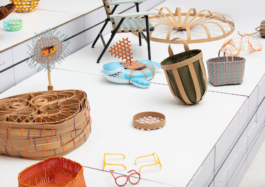
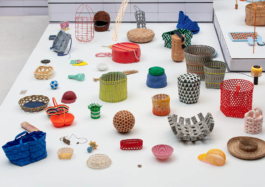
Team Crafts Council Nederland: Marion Poortvliet, Willemien Ippel & Guusje Heesakkers
Curator: Adrianus Kundert
Graphic design: Daniël Maarlevel
Photo credit: Fan Liao
HOW&WOW BASK IT! is financially made possible by Creative Industries Fund NL, Prins Bernhard Cultuurfonds and Dedon.

The origin of this technique derives from the Bornean ‘Bekang Kerawang’, a burden basket typically used for carrying agricultural harvest and game. As a presumption, this technique is introduced based on the needs to construct a rigid (non-organic in form) quadrilateral plane, suited to use them as frames to construct a cuboid container.
